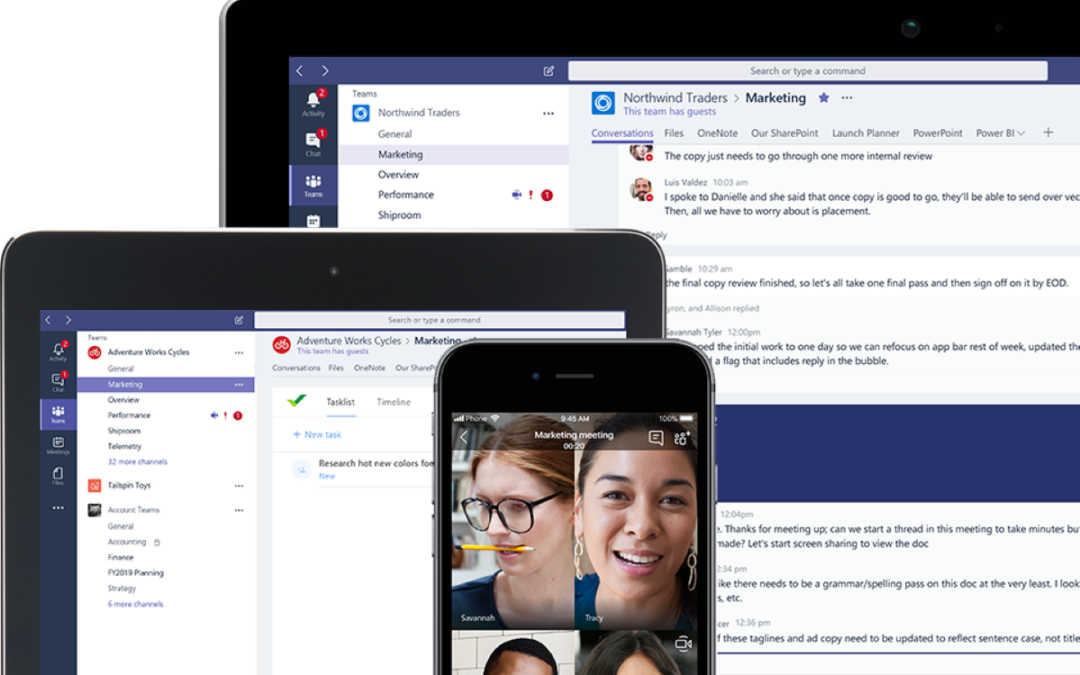People that were in a physical office five days a week found themselves suddenly working from home with unexpected new co-workers: partners, children, and pets. Such a change in the work environment, coupled with a lack of tooling to make this feel normal, might tank productivity for the newly remote employee. It doesn’t have to be this way, though.
A little bit of full disclosure for you, before I begin. We’re used to being a distributed team, and treat work as an activity, not a place. Our team can work from anywhere, so we often find ourselves working from odd places. Further, we can work just about anytime, so we’re sometimes bad about giving ourselves proper off-time (more on that later).
So, a couple quick-hitters on how we make remote work more personal:
-
We talk. A lot.
Throughout the course of the day, our team has conversations going about projects that are in flight, support work that we’re performing, sales that are in the pipeline, and more. We use dedicated channels in our chat tool for those things, but we also have a dedicated space to talk off-topic. This channel is definitely a busy one, and is filled with great conversation, memes, GIFs, emoji, and all the things that make working with people fun. -
We still meet face-to-face.
Just not physically, since we’re all at home. We use video meetings to sync up at least once a day. It’s a quick discussion of the day and also a chance to laugh and smile with one another. -
We keep it light.
Some people are handling the work from home life like naturals, and others are handling it less well. We try to keep it in the back of our minds that some people won’t perform at their best levels, and that’s okay. Keeping a good outlook on the situation, while sometimes trying, helps others through having a rough go of things.
But at the same time, we’ve learned a couple of lessons.
- Everyone uses different tools for things, and it’s tough to keep everyone on the same page.
- In our case, we’re currently juggling three video platforms (Microsoft Teams, Zoom, and WebEx) and two chat platforms (Microsoft Teams, and Slack). Getting everyone to switch is taking time and patience, for sure.
- We use our own hosted cloud phone system, so the phones are ringing as they always have. Making sure that folks mark themselves available on the mobile app, though, has required some reminding.
- Our customers all use different platforms for meetings, and we tend to use whatever the customer’s preference is. This requires a lot of little apps installed on our laptops, and a good amount of attention to where the links are in a calendar invite.
We’re working towards Microsoft Teams for our collaboration for a multitude of reasons.
- It consolidates tools.
It combines the three things we use most often: group chat, one-on-one instant messaging, and meetings, into a single tool. No more separate apps for chat and video, it just works. - Our other business software can send notifications there instead of e-mail.
We use a pretty extensive toolset for monitoring and maintaining our client base, and we can use Microsoft Teams as a single point of notification for those tools. This prevents brief, episodic notifications from cluttering our inbox. - The client software runs on just about anything.
I normally carry around a ThinkPad running Windows 10 and a MacBook Pro, depending on what I need to work on. Microsoft Teams works on both of these without issue. When I’m not near either of them, my Android smartphone has the Teams client installed as well, keeping me in contact with my team. And for the Linux nerds out there (like me), Microsoft even recently released a Linux client for Teams. - It’s free, or at least it’s included.
We use Microsoft 365 for Business, and Teams is a component built right in. No need to have a separate video conferencing subscription or chat tool.
As someone who is normally not great at giving credit where it’s due, especially if it’s due to Microsoft, I’m pleasantly surprised with how Teams is working for us.
If you’re interested in seeing how you can make Teams work for your business, we’re of course here to help. Let’s chat!
